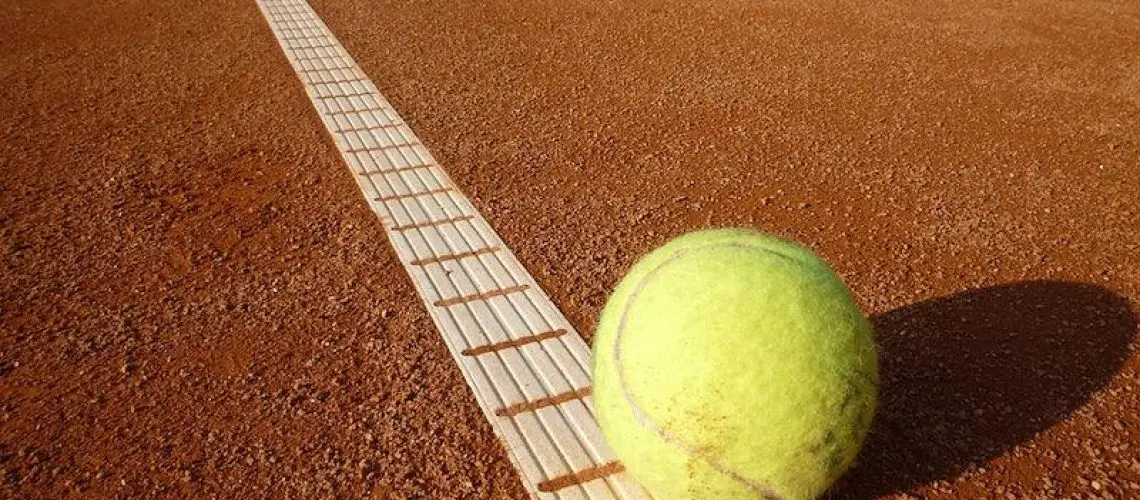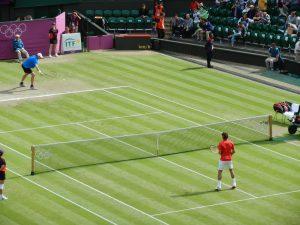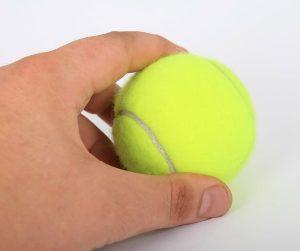We may earn money or products from the companies mentioned in this post.
Brief Overview of Tennis Court Cracks

Tennis court cracks are a common issue that can occur due to various factors These cracks can not only affect the aesthetics of the court but also pose potential safety hazards for players Understanding the causes behind these cracks and addressing them promptly is crucial in maintaining a high-quality playing surface
1 Causes of Cracks on Tennis Courts
Cracks on tennis courts can be caused by a combination of factors, including:
-
Climate Conditions:
Extreme weather conditions such as freezing temperatures or excessive heat can cause the ground to expand and contract, leading to cracks -
Poor Construction:
Improper construction techniques or the use of low-quality materials during the initial installation can result in structural weaknesses and eventual cracking -
Tree Roots:
The growth of tree roots beneath the court’s surface can exert pressure and cause cracks over time -
Aging:
As tennis courts age, they become more susceptible to cracking due to wear and tear from regular usage
2 Importance of Timely Repair
Timely repair of tennis court cracks is essential for several reasons:
-
Safety:
Cracks on tennis courts can create tripping hazards for players and increase the risk of injuries Prompt repair ensures player safety -
Court Performance:
Cracks can affect ball bounce, alter playing conditions, and impact player performance Repairing these issues helps maintain optimal court performance -
Court Longevity:
Regular maintenance, including crack repair, extends the lifespan of a tennis court, saving costs in the long run by avoiding major repairs or replacements
Purpose of the Blog Post

The purpose of this blog post is to provide a comprehensive guide on repairing tennis court cracks Whether you are a tennis court owner, facility manager, or a player who wants to understand more about crack repair, this article will offer valuable insights and practical tips to ensure your tennis court remains in top-notch condition
Types of Tennis Court Cracks and Prevention Methods

Structural Cracks
Structural cracks are a common issue that can affect the integrity of a tennis court These cracks often occur due to underlying structural problems or improper construction techniques Factors such as poor soil compaction, inadequate drainage systems, or insufficient base materials can contribute to the development of structural cracks
To prevent structural cracks, it is crucial to ensure proper construction practices are followed during the initial installation of the tennis court This includes conducting thorough soil analysis and compaction tests, using high-quality base materials, and ensuring adequate water drainage through the installation of an efficient drainage system By addressing these key factors during construction, you can minimize the risk of structural cracks in your tennis court
Surface Cracks
Surface cracks are another type of crack commonly found on tennis courts These cracks typically appear on the top layer of the court surface and can be caused by various factors such as weather-related damage, aging surface materials, or excessive use over time
To prevent surface cracks, regular maintenance is essential This includes cleaning debris from the surface regularly and promptly repairing any minor cracks before they worsen Additionally, scheduling routine resurfacing every few years will help rejuvenate the court surface and extend its lifespan
Applying protective coatings on a regular basis is also recommended as it helps protect the surface from environmental elements such as UV rays and moisture penetration, which can lead to cracking
By implementing these preventive measures for both structural and surface cracks, you can ensure your tennis court remains in optimal condition for extended periods while providing players with a safe playing environment
Conclusion:

To maintain a high-quality tennis court that lasts for years without succumbing to various types of cracking issues, it is essential to invest in proper construction techniques, efficient drainage systems, and regular maintenance practices By addressing these aspects diligently, you can enjoy a durable and crack-free tennis court that enhances the playing experience for all
Repairing Tennis Court Cracks: Techniques and Materials

Tennis court cracks can be a common issue that arises over time due to weather conditions, heavy usage, or inadequate maintenance It’s crucial to address these cracks promptly to prevent further damage and ensure the court’s longevity In this article, we will explore various techniques and materials for repairing tennis court cracks
Assessing the Severity of the Crack(s)
Before diving into the repair process, it is essential to assess the severity of the crack(s) on your tennis court surface This evaluation will help you determine whether it’s a DIY project or if calling a professional contractor is necessary
Some minor cracks can easily be repaired by homeowners themselves using simple techniques and materials However, more extensive or complex cracks may require professional expertise to achieve optimal results
To decide whether you should take on the repair yourself or hire a contractor, consider factors such as your skill level, available equipment, time constraints, and budget
Crack Filling Techniques
When dealing with smaller cracks on your tennis court surface, crack filling techniques can effectively restore its integrity and appearance Here are three commonly used crack filling techniques:
-
Acrylic Patch Binder:
This technique involves using an acrylic-based patch binder to fill in small cracks The binder acts as an adhesive that helps seal the crack and prevents further deterioration -
Rubberized Crack Filler:
Rubberized crack filler is another effective option for repairing minor cracks This flexible material adheres well to different surfaces and expands and contracts with temperature changes without compromising its structural integrity -
Asphalt or Concrete Emulsion:
Asphalt or concrete emulsion is commonly used for filling larger cracks This liquid mixture seeps into the crack, creating a strong bond with the surrounding surface and providing long-lasting repair
Resurfacing Options for More Extensive Damage
If your tennis court has more extensive damage, such as multiple or wider cracks, resurfacing might be necessary to restore its functionality and aesthetics Here are three resurfacing options for addressing significant damage:
-
Acrylic Resurfacer:
Acrylic resurfacer is an excellent option for rejuvenating worn-out tennis court surfaces This coating not only fills in cracks but also provides a new layer of protection against future damage -
Armor Crack Repair System:
The Armor crack repair system is specifically designed to fix wide cracks and depressions on tennis courts It consists of a combination of materials that provide exceptional strength and durability -
Full-Depth Asphalt or Concrete Replacement:
In severe cases where the existing surface is beyond repair, full-depth asphalt or concrete replacement may be necessary This option involves removing the damaged surface entirely and installing new asphalt or concrete
In conclusion, repairing tennis court cracks requires careful assessment of their severity and selecting suitable techniques and materials accordingly Whether it’s minor crack filling or extensive resurfacing, addressing these issues promptly will help maintain the quality and longevity of your tennis court
Maintenance Tips After Crack Repairs

Regular maintenance is essential for keeping your tennis court in top shape after crack repairs By following these tips, you can ensure the longevity of the repaired areas and prevent new damage from occurring
Regular cleaning and debris removal
One of the most important maintenance tasks is regular cleaning and debris removal Over time, dirt, leaves, and other debris can accumulate on the surface of your tennis court If left unattended, this debris can cause wear and tear on the repaired areas
To prevent this, make it a habit to sweep or blow off any loose debris from your tennis court regularly Additionally, consider using a pressure washer to remove stubborn stains or dirt buildup
Seasonal maintenance tasks
Seasonal changes can have an impact on the condition of your tennis court To keep it in optimal condition throughout the year, consider these seasonal maintenance tasks:
-
Winterizing your tennis court:
In colder climates, freezing temperatures can cause cracks to reappear or worsen Before winter sets in, make sure to apply a protective sealant to the entire surface of your tennis court to prevent moisture penetration -
Summer upkeep tips:
During hot summer months, excessive heat and UV rays can also affect your tennis court’s condition To protect it from sun damage, consider applying a UV-resistant coating annually Additionally, regularly watering the surface can help cool it down and reduce cracking caused by extreme heat
Scheduling routine inspections
Routine inspections are crucial for identifying any potential issues before they escalate into major problems Here are some recommendations for scheduling routine inspections:
-
Frequency recommendations:
It is recommended to have a professional inspection of your tennis court at least once a year However, if your court experiences heavy usage or extreme weather conditions, more frequent inspections may be necessary -
What to look for during inspections:
During inspections, pay close attention to the condition of the repaired areas Look for any signs of cracking, peeling, or deterioration Additionally, check for any unevenness in the surface that could affect gameplay
By following these maintenance tips after crack repairs, you can ensure that your tennis court remains in excellent condition and provides years of enjoyment for players
Useful Links

Repairing Cracks in Tennis Courts and Why It’s Important
Why Does My Tennis Court Crack?
Armor Crack Repair: Home
Tennis Court Cracking is Inevitable
Cracking of Asphalt Tennis Courts – Munson, Inc.
Fix The Court Cracks
The second part of our crack filling series. I left Brian’s …
Crack Patch | SportMaster | DIY Athletic Court Crack Filling
Tennis Court Crack Repair Alternatives
Tennis Court Resurfacing and Repair | Western NY
Novacaulk Crack Repair System Part #1 10 oz. Tube
Armor Crack Repair – Tennis Court Repair and Construction
Tennis Court Repair Experts • Pro Track and Tennis
Tennis Court Cracking & Warping
Repair / Resurface – Lower Bros. Tennis Courts
When to Repair, Resurface, or Replace a Tennis Court
Tennis Court Surfaces – Court Surface Repair | Connecticut






